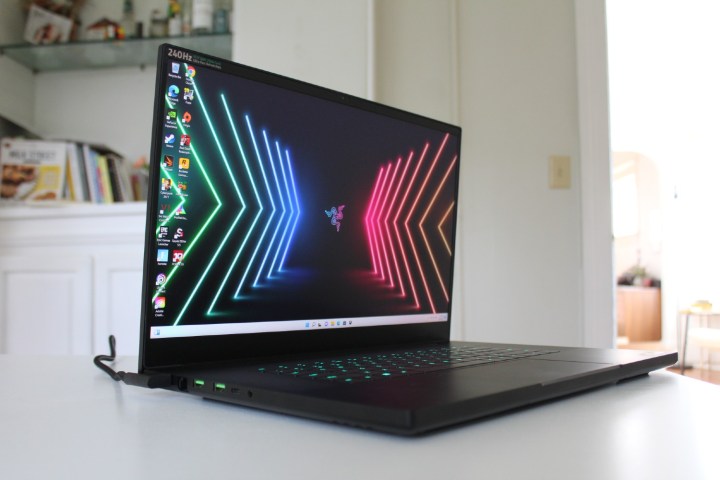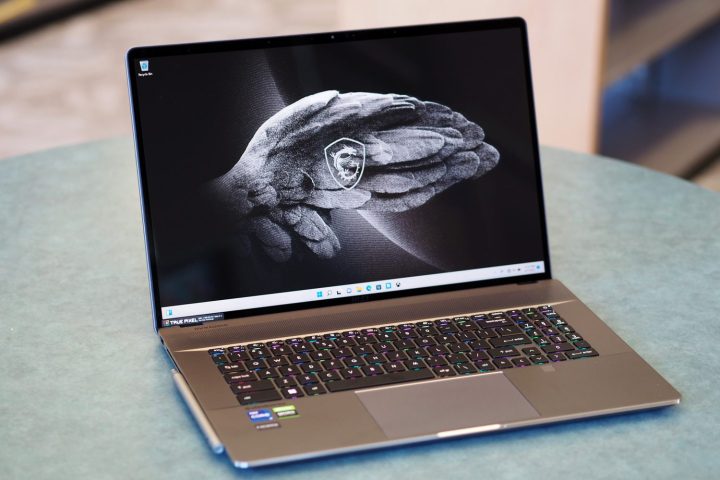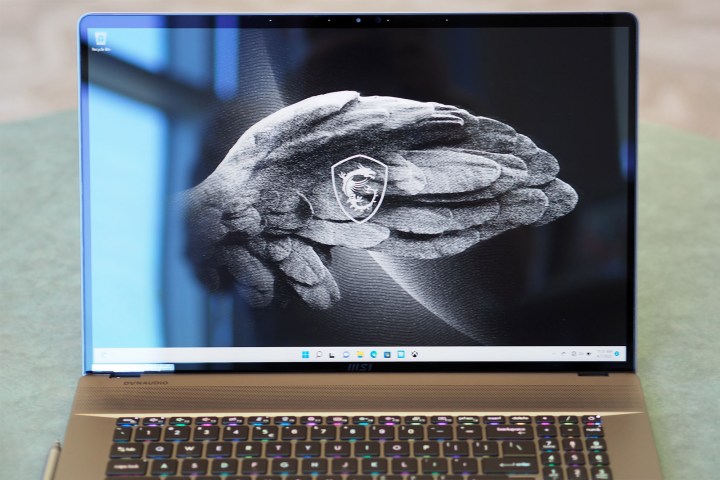Razer and MSI, two of the giants of gaming laptops, released new or updated 17-inch machines that offer outstanding performance for productivity workers, creators, and gamers alike. These large 17-inch laptops are perfect for anyone who wants an expansive display to go with the best performance you’ll find in a semi-portable PC.
The Razer Blade 17 and the MSI Creator Z17 are the two
Specs
| Razer Blade 17 | MSI Creator Z17 | |
| Dimensions | 15.55 inches by 10.24 inches by 0.78 inches | 15.04 inches by 10.24 inches by 0.75 inches |
| Weight | 6.06 pounds | 7.4 pounds |
| Processor | Intel Core i7-12800H Intel Core i9-12900H |
Intel Core i7-12700H Intel Core i9-12900H |
| Graphics | Nvidia GeForce RTX 3060 Nvidia GeForce RTX 3070 Ti Nvidia GeForce RTX 3080 Ti |
Nvidia GeForce RTX 3070 Ti Nvidia GeForce RTX 3080 Nvidia GeForce RTX 3080 Ti |
| RAM | 16GB DDR5 32GB DDR5 |
32GB DDR5 64GB DDR5 |
| Display | 17.3-inch 16:9 IPS Full HD (1,920 x 1,1080) 360Hz 17.3-inch 16:9 IPS QHD (2,560 x 1,440) 165Hz 17.3-inch 16:9 IPS QHD 240Hz 17.3-inch 16:9 IPS UHD (3,840 x 2,160) 144Hz |
17-inch 16:10 IPS QHD+ (2,560 x 1,600) 165Hz |
| Storage | 512GB PCIe 4.0 SSD 1TB PCIe 4.0 SSD |
1TB PCIe 4.0 SSD 2TB PCIe 4.0 SSD |
| Touch | No | Yes |
| Ports | 2 x USB-A 3.2 Gen 2 1 x USB-C 3.2. Gen 2 2 x USB-C with Thunderbolt 4 3.5mm audio jack Full-size SD card reader |
2 x USB-A 3.2 Gen 2 2 x USB-C with Thunderbolt 4 1 x HDMI 2.1 3.5mm audio jack Full-size SD card reader |
| Wireless | Wi-Fi 6E and Bluetooth 5.2 | Wi-Fi 6E and Bluetooth 5.2 |
| Webcam | 1080p, Windows 11 Hello infrared camera | 1080p, Windows 11 Hello infrared camera |
| Operating system | Windows 11 | Windows 11 |
| Battery | 82 watt-hour | 90 watt-hour |
| Price | $2,700+ | $3,250 |
| Rating | 3.5 stars out of 5 | 3.5 stars out of 5 |
Design

The Razer Blade 17 is a member of the most stunning line of
The Creator Z17 isn’t specifically a
Both
You’ll get per-key RGB lighting on both

The Creator Z17 does stand out thanks to its touchscreen support and, even more notably, its active pen support that’s a first on a 17-inch laptop. We’re not sure how useful that is on a clamshell laptop, but it’s there if you need it. There’s even a Bluetooth-enabled presenter function where a single tap of the pen’s single button advances a slide in a presentation while a double tap moves backward a slide.
The 1080p webcams equipped by both
Connectivity is solid on both machines. The Blade 17 has a single USB-C 3.2 Gen 2 port, two USB-C ports with Thunderbolt 4, two USB-A 3.2 Gen 2 ports, a 3.5mm audio jack, and a full-size SD card reader. The Creator Z17 has almost the same repertoire, with a full-size
Performance

We reviewed the Blade 17 with a 14-core (six Performance and 8 Efficient) and 20-thread 12th-gen Intel Core i7-12800H and the Creator Z17 with a Core i7-12700H, a slightly slower-clocked version of the same chip. Unsurprisingly, their performance was predictable across our range of CPU-intensive benchmarks. The Blade 17 was notably faster in our Handbrake test that encodes a 420MB video as H.265 and in Cinebench R23, both of which utilize the CPU exclusively for tasks that creators need to perform. In the more real-world Pugetbench Premiere Pro benchmark that runs in a live version of Adobe Premiere Pro, the Blade 17 was significantly faster.
I’ll note here that MSI has a utility that can switch from the balanced mode results reported here to a performance mode that significantly changed its results. For example, in this mode, the Creator Z17 finished the Handbrake test in just 70 seconds, achieved a Cinebench multi-core score of 15,754, and increased its Pugetbench result to 984. In each case, MSI’s performance mode pushed the Creator Z17 ahead of the Blade 17. Even so, both
For gamers, the Blade 17 we reviewed benefited tremendously from its Nvidia GeForce RTX 3080 Ti compared to the Creator Z17’s RTX 3070 Ti. Razer’s laptop was faster across the board, as expected, although the Creator Z17 was fast enough for running modern titles at 1440p with decent graphics. MSI’s performance mode only made a meaningful difference in Assassin’s Creed Valhalla, with the Creator Z17 hitting 80 frames per second (fps). In the rest of our benchmark games, it benefited only a few fps from the switch.
You can configure the Creator Z17 with an RTX 3080 Ti for a lot more money if you want faster gaming results. As it is, both are good gaming performers given their respective GPUs. And both
| Razer Blade 17 (Core i7-12800H) |
MSI Creator Z17 (Core i7-12700H) |
|
| Geekbench 5 (single / multi) |
1,808 / 11,843 | 1,744 / 11,750 |
| Handbrake (seconds) |
73 | 88 |
| Cinebench R23 (single / multi) |
1,697 / 13,218 | 1,804 / 11,266 |
| PCMark 10 Complete | 7303 | 6951 |
| Pugetbench Premiere Pro | 969 | 897 |
| 3DMark Time Spy | 12,643 | 8,736 |
| Assassin’s Creed Valhalla (1080p Ultra High) |
83 | 60 |
| Cyberpunk 2077 (1080p Ultra DLSS off) |
91 | 61 |
| Fortnite (1080p Epic) |
104 | 85 |
Display

Choosing a display for the Blade 17 is a challenge, given several options offering a mix of resolutions and refresh rates. All of them are 17.3-inch IPS panels in the old-school 16:9 aspect ratio, which is fine for gamers but a bit of a constraint for productivity and creative work. The options include Full HD (1,920 x 1,1080) at 360Hz, QHD (2,560 x 1,440) at 165Hz, QHD (2,560 x 1,440) at 240Hz, and UHD (3,840 x 2,160) at 144Hz. We tested the QHD version running at 240Hz and found it to provide brightness that’s just above our 300-nit threshold, colors that were wider and more accurate than average, and contrast that was under our preferred 1,000:1. The Creator Z17 offers a single display, a 17-inch 16:10 IPS QHD+ (2,560 x 1,600) running at 165Hz. It was slightly brighter in our testing, offered similarly wide colors that weren’t quite as accurate, and almost identical contrast.

Both displays are just under what creators are craving in terms of colors and contrast, but both are great for workers and gamers. The Creator Z17 benefits from its taller and more productivity-friendly aspect ratio and touch and pen capabilities, while the Blade 17 has a faster refresh rate. We’ll call this category a draw as far as the displays we reviewed, but Razer offers many more options, including a super-fast 360Hz Full HD display and a high-resolution UHD panel.
| Razer Blade 17 (Core i7-12800H) |
MSI Creator Z17 (Core i7-12700H) |
|
| Brightness (nits) |
313 | 355 |
| AdobeRGB gamut | 90 | 87 |
| sRGB gamut | 100 | 100 |
| Accuracy (DeltaE, lower is better) |
0.84 | 1.35 |
| Contrast ratio | 890:1 | 840:1 |
Portability

The Creator Z17 is slightly less wide than the Blade 17 while being as deep due to a slightly smaller 17-inch display versus 17.3 inches and a taller 16:10 aspect ratio. The Creator Z17 is also slightly thinner at 0.75 inches versus 0.78 inches but heavier at 7.4 pounds versus 6.06 pounds. You’ll definitely notice these
You’ll have even more to carry around in huge power bricks thanks to battery life that will struggle to get you through lunch. The Creator Z17 benefits from its larger 90 watt-hour battery compared to the Blade 17’s 82 watt-hour version, with about an hour more battery life in both our web browsing and video looping tests.
| Razer Blade 17 (Core i7-12800H) |
MSI Creator Z17 (Core i7-12700H) |
|
| Web browsing | 3 hours 11 minutes | 4 hours 23 minutes |
| Video | 3 hours 41 minutes | 4 hours 32 minutes |
The Razer Blade 17 is the more refined 17-inch laptop
The newest Razer Blade 17 starts at $2,700 for a Core i7-12800H, 16GB of DDR5 RAM, a 1TB PCIe 4.0 SSD, a GeForce RTX 3060, and a 17.3-inch QHD display running at 165Hz. You can spend as much as $4,300 for a Core i9-12900H, 32GB of DDR5
The Creator Z17 is even more expensive, starting at $3,250 for a Core i7-12700H, 32GB of DDR5
The Razer Blade 17 is hard to beat, with great performance, stunning industrial design, and some of the best build quality around. The MSI Creator Z17 puts up a good fight, and it even wins the performance battle in some cases, but it’s simply not as refined as the Blade 17.
Editors' Recommendations
- These Razer Blade discounts for Amazon Gaming Week are rogue-like
- Save $400 on this Razer gaming laptop with an RTX 4060
- Hurry! The Razer Blade 17 gaming laptop is 44% off today
- One of Razer’s best gaming laptops is $400 off right now
- This Razer Blade 17 gaming laptop with an RTX 3070 Ti is 47% off

